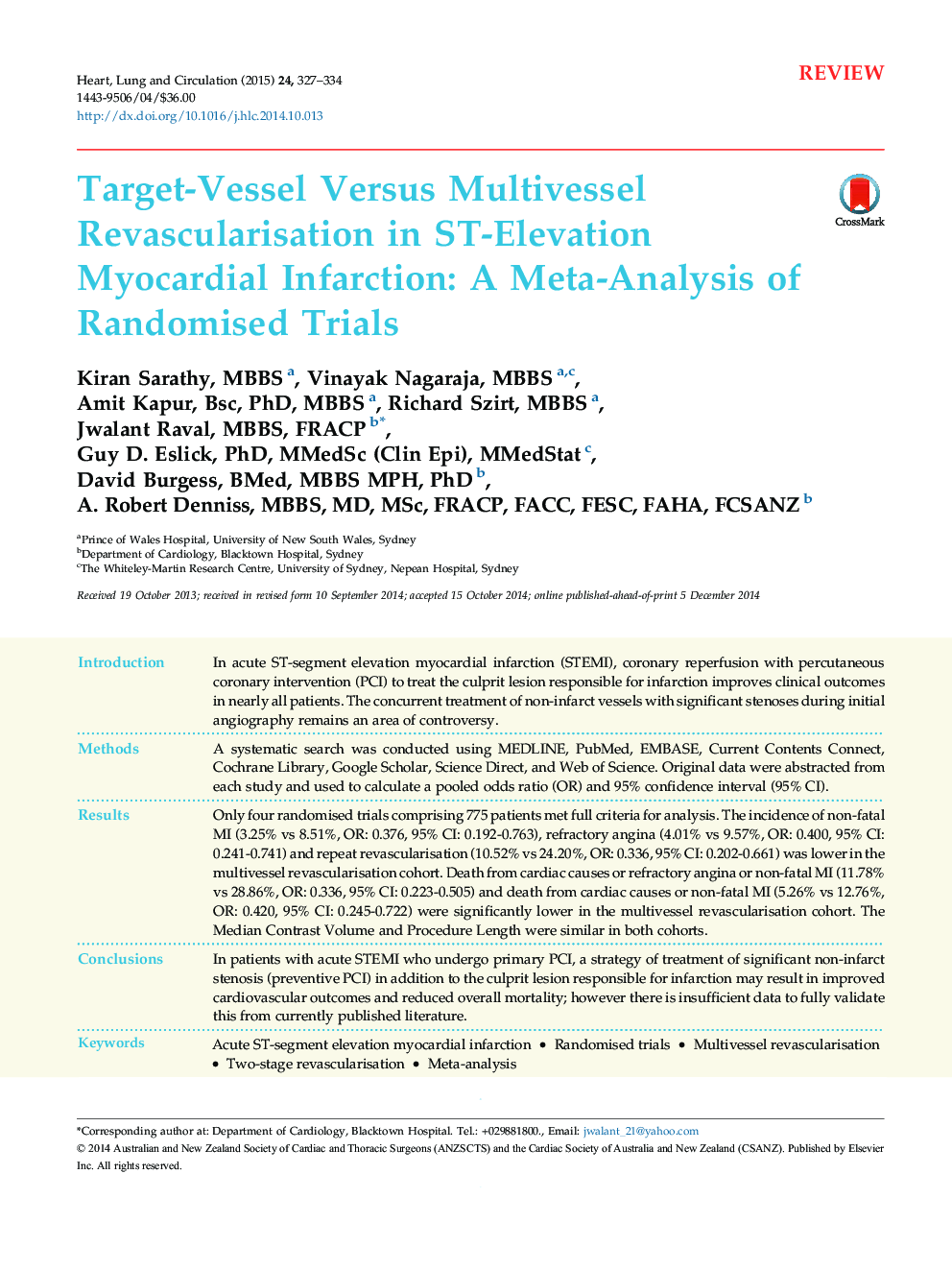| Article ID | Journal | Published Year | Pages | File Type |
|---|---|---|---|---|
| 2917584 | Heart, Lung and Circulation | 2015 | 8 Pages |
IntroductionIn acute ST-segment elevation myocardial infarction (STEMI), coronary reperfusion with percutaneous coronary intervention (PCI) to treat the culprit lesion responsible for infarction improves clinical outcomes in nearly all patients. The concurrent treatment of non-infarct vessels with significant stenoses during initial angiography remains an area of controversy.MethodsA systematic search was conducted using MEDLINE, PubMed, EMBASE, Current Contents Connect, Cochrane Library, Google Scholar, Science Direct, and Web of Science. Original data were abstracted from each study and used to calculate a pooled odds ratio (OR) and 95% confidence interval (95% CI).ResultsOnly four randomised trials comprising 775 patients met full criteria for analysis. The incidence of non-fatal MI (3.25% vs 8.51%, OR: 0.376, 95% CI: 0.192-0.763), refractory angina (4.01% vs 9.57%, OR: 0.400, 95% CI: 0.241-0.741) and repeat revascularisation (10.52% vs 24.20%, OR: 0.336, 95% CI: 0.202-0.661) was lower in the multivessel revascularisation cohort. Death from cardiac causes or refractory angina or non-fatal MI (11.78% vs 28.86%, OR: 0.336, 95% CI: 0.223-0.505) and death from cardiac causes or non-fatal MI (5.26% vs 12.76%, OR: 0.420, 95% CI: 0.245-0.722) were significantly lower in the multivessel revascularisation cohort. The Median Contrast Volume and Procedure Length were similar in both cohorts.ConclusionsIn patients with acute STEMI who undergo primary PCI, a strategy of treatment of significant non-infarct stenosis (preventive PCI) in addition to the culprit lesion responsible for infarction may result in improved cardiovascular outcomes and reduced overall mortality; however there is insufficient data to fully validate this from currently published literature.
